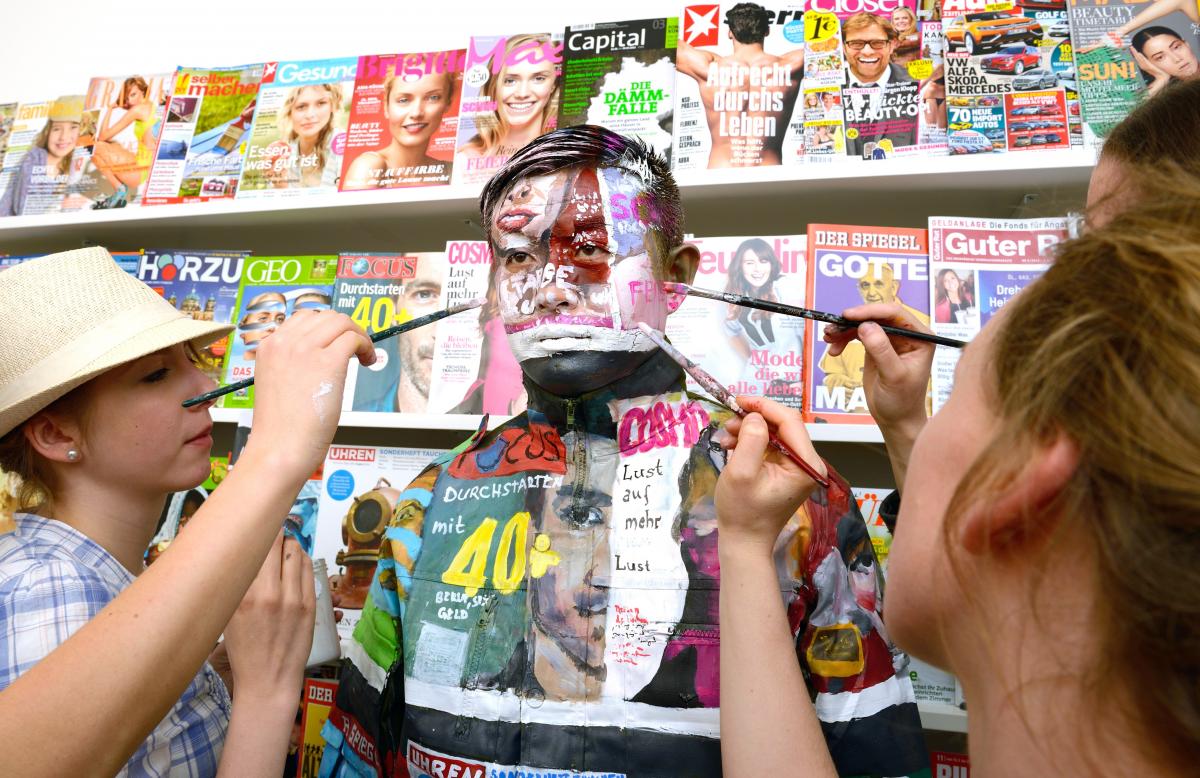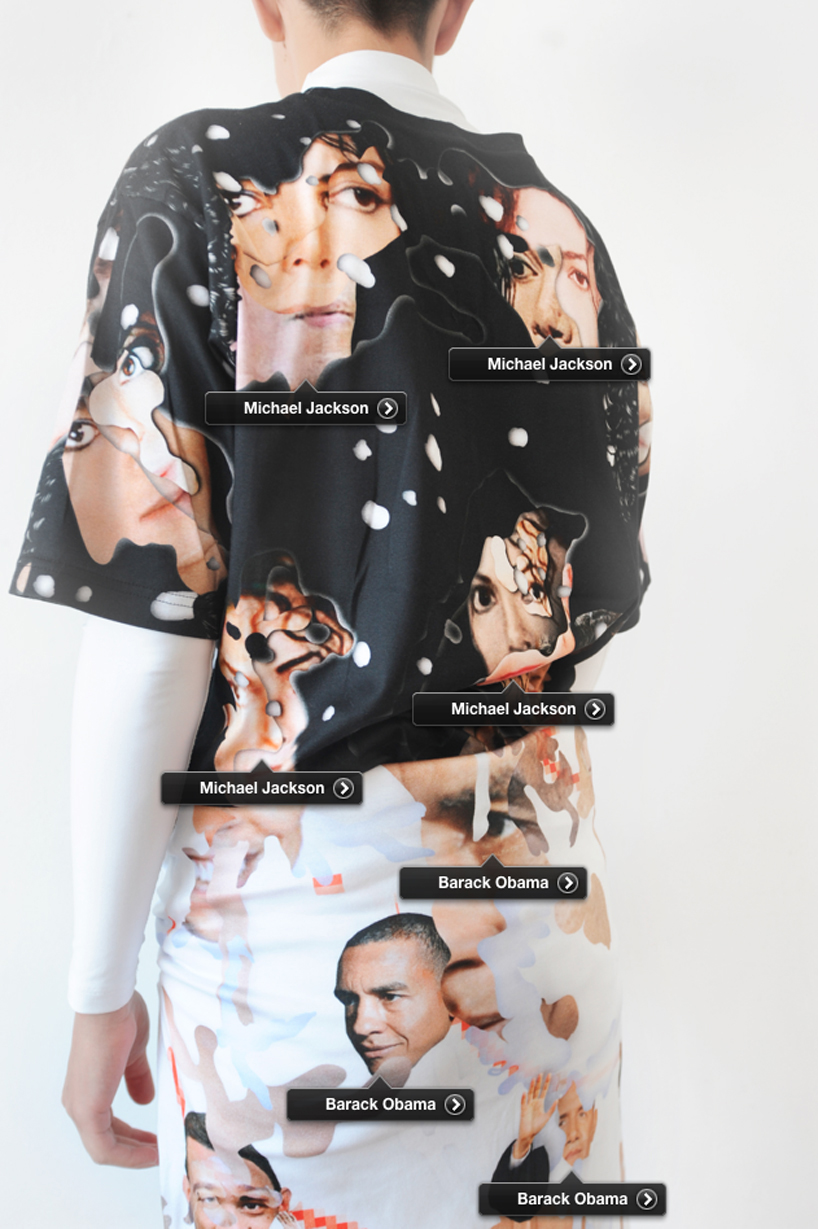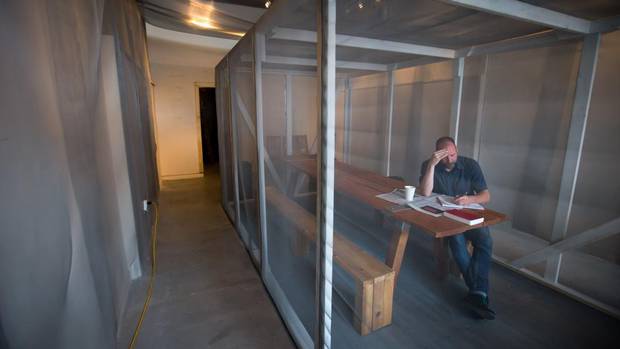Dodging and Dazzling: Responses to Mass Surveillance
Growing numbers of designers are devising tools to enable personal anonymity and invisibility responding to the erosion of our privacy.

The Chinese artist Liu Bolin being painted by his assistants in front of a wall of magazines. While most artists like to stand out from the crowd, Liu Bolin likes to blend in to his surroundings. The pioneer of camouflage art has been painted from head to foot to appear nearly invisible against a wide range of backdrops.

Another family of camouflage projects is developing around the desire to trick the facial recognition software increasingly employed by security systems. Dutch designer Simone C. Niquille’s Glamouflage project offers clothing printed with bizarre collages of celebrity impersonators and pirated faces used in fake profiles and spam ads, a technique intended to confuse machine vision algorithms by adding noise to the wearer’s image.

The Faraday cage, a construction which interferes with electromagnetic signals, is another popular technique for safeguarding privacy. During a residency with HCMA Architecture + Design in 2014, the social artist Julien Thomas created a pop-up Faraday Café in Vancouver’s Chinatown. The café contained a 2.5 × 4.9 m (8.2 × 16.1 ft) box formed out of aluminium mesh. Inside, café customers could seek refuge from Wi-Fi and mobile phone signals as well as from electronic surveillance.

